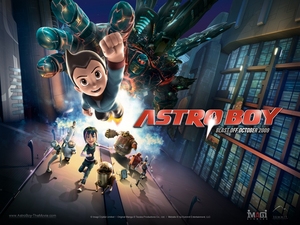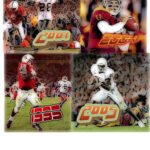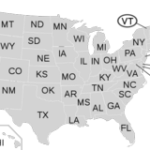Freakonomics was one of those books that I figured on being absolutely boring and, well besides a possible thirty extra points in my government class, it was going to be a complete waste of my time. Well you know the old saying, “Don’t judge a book by its cover”; yeah well this was it for me. I not only enjoyed the book, but truly did learn some very interesting facts about the way the world works and received some insights to the so called merit pay debate for public school teachers. I highly recommend this book to anyone and everyone, even if they think it is not for them.
The authors of Freakonomics discusses in chapter one about how incentives can do the opposite of what the incentives are created for. They compare teachers and sumo wrestlers to explain what they mean and why. Teachers, especially public school teachers, are now being tempted to cheat to receive bonuses for their children to do better on standardized testing. If their students do not do well, they do not get the extra money plus they can even lose their job. This is where the incentive that was created is doing what is not intended to do and that was for teachers to cheat for their students. The authors do not suggest a way that it truly can be prevented besides having a state representative to administer the test, but schools can help curb the thought of cheating by not allowing the teacher to administer the test to their own students. Now Sumo wrestlers are doing the same thing but instead of cheating on tests they are rigging matches. Instead of just getting in there and playing the sport they are helping the wrestlers that are in their group. Like teaching, the better you do in Sumo wrestling the better pay you get. And when one player in the same, what they call table, is one the bubble of being in the elite and the other is no way near about to fall from that, than the match rigging begins. They will rig the match so the one wrestler that is on the bubble of not being paid the big bucks will win the other wrestler who has nothing to lose. Unfortunately with the much closed nit family of sumo wrestlers, there has never been exact proof of the match rigging for Sumo Wrestling.
In Chapter Two, the authors write about the consumer not having the secret information that companies have. They, individuals, organizations, and businesses, will often take advantage of their access to information at the expense of others. Whole industries have attained enormous success and many important historical events have happened as the outcome of an inequality in the flow of information.
The authors told a story of a man who helped cripple the racially prejudiced Ku Klux Klan simply by widely disseminating their secret language, their code talk in other words. Stetson Kennedy broke into the group secretly in the World War II time period and wrote about the secret rituals and codes of the Ku Klux Klan. He then gave the information to Hollywood writers, who used the information to create a storyline on the Superman radio program which was broadcasted over the radio. Kids all over the United States copied what they heard on the shows in their games. With everyone knowing what their code was the Ku Klux Klan mystery was no longer a mystery.
The author also went in and looked at the real estate industry and the behavior of real estate agents. They looked at information about real estate agents and the typical practices they used when they were selling their own houses. The authors had found out that real estate agents may not use the same tools to sell a clients house that they used to sell their own house. The authors suggest that even consumers can help themselves by searching the internet for this information. The internet can be used to change the way they get information and help change the way that information can be held against them.
In Chapter three of the book, the authors discuss their belief on why drug dealers still live at home with their mom. Most people believe that drug dealers have a bunch of money and are living the high life, sort of speak. The author uses the research from a sociologist from Chicago. The sociologist Venkatesh did a series of field studies in downtown Chicago. In these field studies, Venkatesh was able to infiltrate an inner city gang, and was able to look at the financial working of gangs.
The author was able to take the information from Venkatesh and compare it to how a basic corporation, like Mc Donald’s, financial paperwork. Just like the corporation, the gangs has a few major big wigs which would be like the corporations CEO’s. These are the ones who make the real money from the gang’s illegal activities. Just like the CEO’s make the real money from the minimum wage workers at the bottom. After a close look at the workings of the gang, the author finds out that the average drug dealer makes less than minimum wage. If this information was available to the prospective newbie drug dealer, they would find out that he or she would make more flipping burgers at Mc Donald’s. This is why drug dealers still live at home with mom.
Chapter Four was the most interesting in my mind. The title of the chapter four is Where Have All the Criminals Gone? The authors did a quick glimpse of this at the very beginning of the book. In this chapter, the authors put a link to the declined crime rate to the Roe v. Wade decision by the Supreme Court.
Basically what they authors state is that the crime rate would have sky rocketed like predicted if the Supreme Court had made abortions illegal. The mothers who aborted their children did the system right by not having the children because of the high chance that they would commit crime due to the way they would have been raised. Some will think they take an unpolitically correct view on this, but I would have to disagree. They state that women, who do choose abortion, do choose in the best interest of themselves and the baby. It may not be right morally but that is not what they are talking about.
I believe that the authors were indeed correct about the crime rate lowering due to the fact abortion was legal. The statistics show that children that live in a single parent household have the higher risk of committing violent crimes. Sometimes one will have to accept that not everything is pretty rainbows and unicorns.
What makes a perfect Parent? This is Chapter Five. I had a hard time with this chapter. The author is saying that being a perfect parent means that you have a high socioeconomic status, that the parent is highly educated and so on and so on. I agree that better educated parents are better than high school dropout parents but I also believe there is an exception to the rule. I believe that children that are disciplined have a better outcome than those who are not but the author disagrees. In either case the parent needs to be involved in the child’s education. A parent that does not involve themselves in their children’s school is hurting the child. Better parents are involved parents.
Chapter six was very interesting. This is going to be short and sweet. The authors claim that if a parent gives their child a “ghetto” name then the child will grow up fulfilling the stereotype of the said name. Basically if a black child is named Shytravia, or Shurkora that they will have less attention span, and lead a less fulfilling life than those girls who are named “properly” like Samantha or Jennifer. It can make one think about the consequences of naming a child with a name that might be uniquely unfitting.
Featured articles

Astro Boy Movie Review
Karla News
How to Prepare for the COMPASS Test
Karla News



